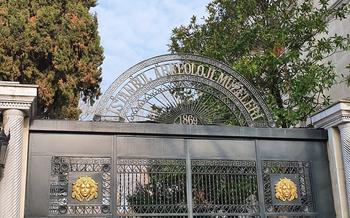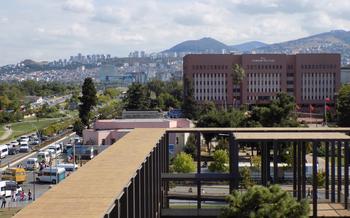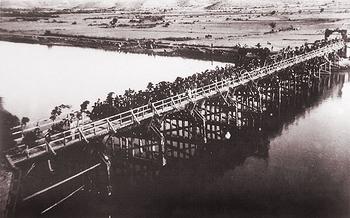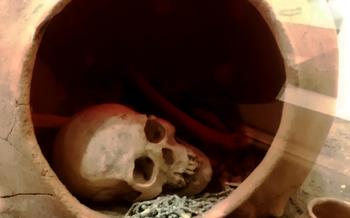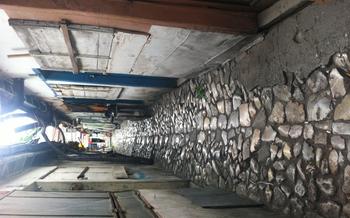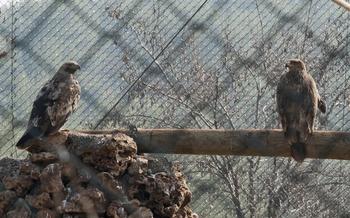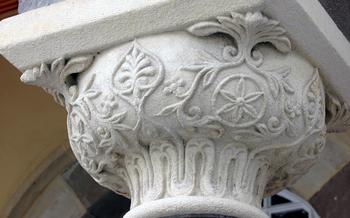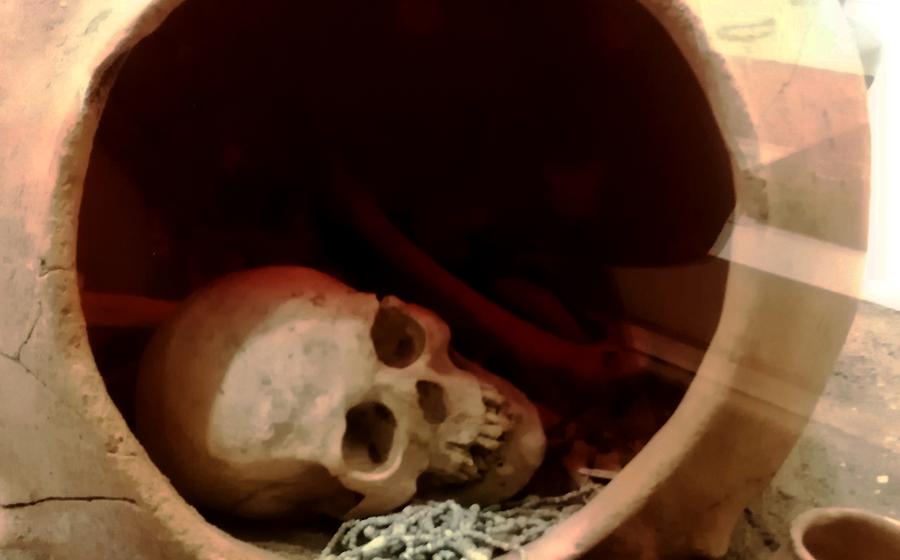
Ortaköy Şapinuva archaeological site of an ancient Hittite city
- Unraveling the Enigma of Ortaköy Şapinuva: A Journey to the Heart of the Hittite Empire
- A Step Back in Time: Tracing the Footsteps of the Hittite Kings
- Unlocking the Secrets of the Hittite Writing System: Cuneiform Inscriptions
- Exploring the Fascinating World of Hittite Art and Architecture
- A Glimpse into the Daily Life of the Hittite People
- Witnessing the Enduring Legacy of the Hittites: A Fusion of Cultures
- Practical Tips for Planning Your Visit to Ortaköy Şapinuva
- Unveiling the Hidden Gems of the Ortaköy Şapinuva Museum
- Immerse Yourself in the Local Culture: Çorum's Culinary Delights
- Venture Beyond Ortaköy Şapinuva: Exploring Çorum's Other Treasures
- Photography Enthusiasts' Paradise: Capturing the Essence of Ortaköy Şapinuva
- Responsible Tourism: Preserving Ortaköy Şapinuva for Future Generations
- Suggested Itineraries for a Memorable Trip to Ortaköy Şapinuva
- Unforgettable Experiences: Activities and Events in Ortaköy Şapinuva
- Insider Tip: Unveiling the Secret Chamber of the Hittite King
Unraveling the Enigma of Ortaköy Şapinuva: A Journey to the Heart of the Hittite Empire
Ortaköy Şapinuva, an enigmatic archaeological site in Çorum, Turkey, holds the secrets of an ancient Hittite city that once thrived as a powerful center of the Hittite Empire. With its intriguing ruins, cuneiform inscriptions, and captivating history, Ortaköy Şapinuva invites travelers to embark on a journey through time, unraveling the mysteries of this forgotten civilization.
Historical Significance: Ortaköy Şapinuva's significance lies in its role as a major Hittite city during the Bronze Age. Excavations have revealed the remains of a fortified city, royal palaces, administrative buildings, religious sanctuaries, and defensive structures, providing valuable insights into the political, economic, and cultural life of the Hittites.
Archaeological Discoveries: The site has yielded a wealth of archaeological treasures, including cuneiform tablets, rock carvings, pottery, and metalwork, which have shed light on Hittite history, religion, and daily life. The discovery of the royal archives, containing hundreds of clay tablets, has been particularly significant, providing a glimpse into the inner workings of the Hittite Empire.
Hittite Legacy: The Hittites left an indelible mark on Anatolian history and culture. Their influence can be seen in the architectural styles, religious practices, and artistic traditions of later civilizations, such as the Phrygians, Lydians, and Persians. Ortaköy Şapinuva stands as a testament to the enduring legacy of the Hittite civilization.
Enigmatic Ruins: Despite extensive excavations, many aspects of Ortaköy Şapinuva remain shrouded in mystery. The purpose of certain structures, the reasons for the city's abandonment, and the ultimate fate of the Hittite Empire continue to puzzle archaeologists and historians, inviting further research and exploration.
A Step Back in Time: Tracing the Footsteps of the Hittite Kings
Ortaköy Şapinuva, once a bustling metropolis, unveils the intricate layout of an ancient Hittite city. As you wander through the well-preserved ruins, you'll discover the grandeur of the royal palace and administrative buildings, where Hittite kings ruled and governed their vast empire. The remains of religious sanctuaries, adorned with intricate carvings and reliefs, offer a glimpse into the spiritual beliefs of this ancient civilization. Explore the defensive structures, such as massive fortifications and gates, that once protected the city from invaders, providing a testament to the Hittites' strategic prowess. Each stone and structure narrates a tale of power, prosperity, and the sophisticated urban planning that characterized the Hittite civilization.
Unlocking the Secrets of the Hittite Writing System: Cuneiform Inscriptions
The Hittites developed a sophisticated writing system known as cuneiform, which they adapted from the Mesopotamians. These intricate wedge-shaped inscriptions, meticulously carved into clay tablets, provide invaluable insights into the Hittite language, history, and culture.
Deciphering Hittite texts has been a remarkable feat of linguistic scholarship. In the early 20th century, German and Czech scholars, including Friedrich Hrozny and Bedřich Hrozný, played a pivotal role in cracking the code. Through painstaking analysis and comparison with other known languages, they unlocked the secrets of Hittite cuneiform, revealing a rich and complex language that shed new light on ancient Anatolia.
The Hittite cuneiform corpus encompasses a wide range of texts, including historical chronicles, royal decrees, religious rituals, and myths. These documents offer a glimpse into the political, social, and religious life of the Hittite Empire. Royal inscriptions narrate the accomplishments of Hittite kings, recounting their military campaigns, diplomatic alliances, and construction projects.
Religious texts provide insights into the Hittite pantheon, their beliefs, and rituals. The Hittites worshipped a diverse array of gods and goddesses, each associated with specific domains and powers. The cuneiform tablets also contain detailed descriptions of religious ceremonies, prayers, and offerings.
Beyond historical and religious texts, cuneiform inscriptions also shed light on the daily life of the Hittites. Economic records document trade transactions, agricultural practices, and taxation systems. Legal texts provide insights into the Hittite judicial system, including laws, regulations, and punishments for various offenses.
The decipherment of Hittite cuneiform has been instrumental in reconstructing the history and culture of the Hittite Empire. These ancient texts offer a unique window into the lives of a powerful civilization that once ruled over Anatolia, leaving an enduring legacy that continues to fascinate scholars and historians to this day.
Exploring the Fascinating World of Hittite Art and Architecture
Ortaköy Şapinuva boasts a remarkable collection of Hittite art and architecture, showcasing the creativity and craftsmanship of this ancient civilization. Unique architectural styles, intricate rock carvings, and reliefs adorn the site, providing valuable insights into Hittite aesthetics and symbolism.
Unique Architectural Styles:
The Hittites exhibited a distinctive style of architecture, blending elements of both Mesopotamian and Anatolian traditions. Their buildings were characterized by massive stone foundations, thick walls, and corbelled arches, creating sturdy structures that have withstood the test of time. The city walls, gates, and towers of Ortaköy Şapinuva exemplify this architectural prowess.
Intricate Rock Carvings and Reliefs:
Hittite rock carvings and reliefs are renowned for their exquisite craftsmanship and symbolic significance. Scattered throughout the site, these carvings depict scenes from mythology, religious ceremonies, royal processions, and everyday life. The famous relief of the "Suppliant God," with its intricate details and expressive posture, is a testament to the artistic talents of the Hittites.
Ceramic and Metalwork Masterpieces:
Ortaköy Şapinuva has yielded a treasure trove of ceramic and metalwork artifacts. Hittite ceramics, with their distinctive shapes and painted designs, offer glimpses into their artistic sensibilities and everyday utensils. Metalworking was another area of expertise, with bronze and iron objects, including weapons, tools, and jewelry, demonstrating their technological advancements.
Symbolism and Artistic Expression:
Hittite art is rich in symbolism, conveying religious, political, and cultural messages. The frequent depiction of gods, goddesses, and mythical creatures reflects their deeply spiritual beliefs. Royal seals and emblems, often featuring animals or symbolic motifs, served as markers of power and authority. By studying these artistic expressions, we gain insights into the complex symbolic language of the Hittites.
A Glimpse into the Daily Life of the Hittite People
The Hittites were not only skilled warriors and builders but also had a rich and vibrant culture. Their daily lives revolved around agriculture, trade, and religious rituals. The residential quarters of Ortaköy Şapinuva offer a glimpse into the domestic life of the Hittites. The houses were typically built of mudbrick and had multiple rooms, including a kitchen, a living room, and bedrooms. The floors were often covered with woven rugs, and the walls were decorated with paintings or reliefs.
Agriculture was the backbone of the Hittite economy. The Hittites cultivated a variety of crops, including wheat, barley, lentils, and chickpeas. They also raised livestock, such as cattle, sheep, and goats. The Hittites were skilled engineers and built an extensive network of irrigation canals to ensure a steady water supply for their crops.
Trade was another important aspect of the Hittite economy. The Hittites traded with neighboring kingdoms and empires, such as Egypt, Mesopotamia, and Assyria. They exported goods such as textiles, metalwork, and pottery, and imported luxury goods such as gold, silver, and spices.
The Hittites were a deeply religious people. They worshipped a pantheon of gods and goddesses, including the sun god, the moon god, and the storm god. Religious rituals were an important part of daily life, and the Hittites built several temples and shrines in Ortaköy Şapinuva. The most important religious festival was the New Year's festival, which was celebrated with great pomp and ceremony.
The Hittite culture was a complex and sophisticated one. Their daily lives were filled with a variety of activities, from farming and trading to religious rituals and festivals. Ortaköy Şapinuva offers a unique opportunity to glimpse into the fascinating world of the Hittite people.
Witnessing the Enduring Legacy of the Hittites: A Fusion of Cultures
The Hittite civilization left an enduring legacy that continues to shape Anatolian culture to this day. Their influence extended beyond their own borders, leaving a profound impact on neighboring civilizations.
The Hittites were instrumental in the development of the Luwian language, which was spoken in much of Anatolia during the Bronze Age. Luwian eventually evolved into several other Anatolian languages, including Lycian and Carian.
The Hittites also played a crucial role in the spread of religious practices and beliefs throughout the region. Their pantheon of gods, led by the storm god Teshub, was adopted by many neighboring cultures. The Hittite rituals and ceremonies were also widely imitated, leaving a lasting mark on Anatolian religious traditions.
In terms of architecture, the Hittites introduced new construction techniques and styles that were later adopted by other civilizations. Their use of massive stone blocks and sophisticated fortifications influenced the architecture of subsequent Anatolian kingdoms, including the Phrygians and Lydians.
The Hittite legacy is not limited to Anatolia. Their cultural influence reached as far as Mesopotamia and Egypt, where Hittite artifacts and texts have been discovered. The Hittites' interactions with these powerful civilizations led to a vibrant exchange of ideas, technologies, and artistic motifs.
In modern-day Turkey, the Hittite heritage is celebrated and preserved through various initiatives. Archaeological excavations at Hittite sites, such as Hattusa and Alacahöyük, continue to shed light on their rich history and culture. Museums across the country display Hittite artifacts and educate visitors about their significance.
The enduring legacy of the Hittites serves as a testament to their profound impact on the development of Anatolian civilization. Their contributions to language, religion, architecture, and art have left an indelible mark on the region, shaping the cultural tapestry of Turkey to this day.
Practical Tips for Planning Your Visit to Ortaköy Şapinuva
To ensure a smooth and enriching experience at the Ortaköy Şapinuva archaeological site, careful planning is essential. Here are some practical tips to help you make the most of your visit:
-
Best Time to Visit: Choose the spring or autumn months (April-May and September-October) for the most pleasant weather conditions. Summer temperatures can be scorching, while winters are cold and snowy, affecting the overall experience.
-
Transportation Options: Ortaköy Şapinuva is easily accessible by road. From Çorum city center, you can take a local bus or hire a taxi. Private transportation or guided tours often include transportation arrangements.
-
On-Site Facilities and Amenities: The archaeological site has basic facilities such as a small visitor center, restrooms, and a designated parking area. However, it's advisable to bring your own snacks and drinks, as there are no food or beverage options available on-site.
-
Guided Tours and Local Guides: Guided tours are highly recommended to gain in-depth insights into the history and significance of the site. Local guides are knowledgeable and can provide personalized explanations and anecdotes.
Unveiling the Hidden Gems of the Ortaköy Şapinuva Museum
A visit to the Ortaköy Şapinuva Museum is an essential part of any trip to the archaeological site. The museum houses a curated collection of artifacts unearthed during excavations at the site, providing valuable insights into Hittite history, culture, and daily life. Visitors can marvel at intricate rock carvings, ceramic vessels, metalwork, and jewelry, each piece a testament to the artistry and craftsmanship of the Hittite people. Interactive exhibits and displays bring the ancient world to life, allowing visitors to engage with the material and gain a deeper understanding of the Hittite civilization. Educational programs and workshops are regularly organized, offering hands-on experiences and opportunities to learn more about Hittite culture. The museum serves as a treasure trove of knowledge, preserving and showcasing the rich legacy of the Hittites for future generations.
Immerse Yourself in the Local Culture: Çorum's Culinary Delights
A visit to Ortaköy Şapinuva is not complete without savoring the delectable flavors of Çorum's traditional Anatolian cuisine. The region boasts a rich culinary heritage that has been shaped by centuries of cultural influences. Here are some must-try local dishes that will tantalize your taste buds:
-
Çorum Manti: These delicate dumplings, filled with a mixture of minced meat and spices, are a local specialty. Served with a yogurt sauce, garlic, and red pepper flakes, they offer a burst of flavors in every bite.
-
Testi Kebabı: This unique dish features tender lamb meat slow-cooked in a sealed clay pot. The pot is then dramatically cracked open at your table, revealing the succulent meat and aromatic juices.
-
Katmer: A traditional Turkish pastry, katmer is made with layers of flaky dough filled with cheese, honey, and nuts. It's a delightful treat that is perfect for breakfast or as an afternoon snack.
-
Çılbır: This dish showcases poached eggs served in a bed of creamy yogurt, topped with garlic, paprika, and butter. It's a simple yet satisfying breakfast or brunch option.
To fully immerse yourself in the local culinary experience, consider participating in a cooking class or workshop. Learn the secrets of preparing these traditional dishes and bring a taste of Çorum back home with you. Local markets and specialty food shops are also great places to discover unique ingredients and delicacies.
Venture Beyond Ortaköy Şapinuva: Exploring Çorum's Other Treasures
While Ortaköy Şapinuva stands as a testament to the grandeur of the Hittite civilization, Çorum offers a wealth of other historical and cultural treasures waiting to be explored. One such site is the Alacahöyük Archaeological Site, home to the remnants of an ancient city that predates the Hittites. Its impressive fortifications and well-preserved artifacts provide a glimpse into the region's rich past.
Another must-visit destination is Hattuşa, the awe-inspiring capital of the Hittite Empire. Located just a short distance from Ortaköy Şapinuva, Hattuşa boasts monumental structures, intricate rock carvings, and remnants of temples and palaces, offering a glimpse into the political and religious center of the Hittite world.
Çorum also boasts a rich Islamic heritage, evident in its historic mosques and churches. The Ulu Mosque, with its elegant architecture and serene ambiance, stands as a testament to the city's Seljuk past. The Church of St. George, nestled amidst picturesque landscapes, offers a glimpse into the region's Christian history.
Venturing beyond the historical sites, Çorum unveils its natural wonders and breathtaking landscapes. The Ilgaz Mountain National Park, with its lush forests, cascading waterfalls, and panoramic views, invites visitors to explore its natural beauty. The Kızılcahamam Thermal Springs, renowned for their healing properties, offer a relaxing and rejuvenating experience.
Whether you're a history buff, nature enthusiast, or simply seeking a unique cultural immersion, Çorum has something to offer every traveler. Embark on a journey through time, discover hidden gems, and create lasting memories as you explore the diverse treasures of this captivating region.
Photography Enthusiasts' Paradise: Capturing the Essence of Ortaköy Şapinuva
Ortaköy Şapinuva is a visual feast for photography enthusiasts, offering a captivating blend of ancient ruins, stunning landscapes, and intricate details that beg to be captured. To make the most of your photographic journey, consider the following tips:
Recommended Camera Equipment:
- Invest in a high-quality DSLR or mirrorless camera with interchangeable lenses.
- Bring a wide-angle lens to capture sweeping vistas of the archaeological site.
- A telephoto lens will allow you to zoom in on distant details and architectural features.
- A tripod is essential for sharp shots, especially in low-light conditions.
Ideal Lighting Conditions:
- The golden hours, just after sunrise and before sunset, provide the most flattering light for photography.
- Avoid shooting in harsh midday sun, as it can create harsh shadows and overexposed areas.
- Overcast days can be ideal for capturing moody and atmospheric shots.
Composition Tips for Striking Shots:
- Experiment with different angles and perspectives to create dynamic compositions.
- Incorporate leading lines, such as pathways or columns, to draw the viewer's eye into the image.
- Frame your shots with natural elements like trees or rocks to add depth and interest.
- Play with negative space to create a sense of balance and serenity.
Post-Processing Techniques:
- Utilize editing software to enhance your photos and bring out the best in your shots.
- Adjust exposure, contrast, and colors to create a cohesive and visually appealing look.
- Experiment with filters and presets to add a unique touch to your images.
- Share your stunning photographs with the world on social media, using relevant hashtags to connect with fellow photography enthusiasts.
Responsible Tourism: Preserving Ortaköy Şapinuva for Future Generations
As a traveler, it is crucial to be mindful of the impact your visit may have on the delicate ecosystem and cultural heritage of Ortaköy Şapinuva. Embrace sustainable practices to preserve this ancient site for future generations. Eco-friendly initiatives such as reducing plastic waste, conserving water, and opting for local transportation minimize your environmental footprint.
Respect the local customs and traditions by dressing modestly, seeking permission before taking photographs, and avoiding any actions that may be deemed disrespectful. Supporting local businesses, artisans, and tour guides ensures that the community directly benefits from tourism.
Environmental conservation and waste management are of utmost importance. Dispose of waste responsibly, recycle whenever possible, and avoid disturbing the natural surroundings. Remember, your actions as a responsible traveler can contribute to the long-term preservation of Ortaköy Şapinuva and its invaluable heritage.
Suggested Itineraries for a Memorable Trip to Ortaköy Şapinuva
To make the most of your visit to Ortaköy Şapinuva, we have curated itineraries that cater to different interests and time constraints. Whether you have a day, two days, or even three days to explore this ancient city, our recommendations will ensure you uncover its hidden treasures.
One-Day Itinerary: Highlights and Must-Sees
- Start your day by visiting the Ortaköy Şapinuva Museum to gain insights into the history and culture of the Hittites.
- Explore the archaeological site, focusing on the Royal Palace, religious sanctuaries, and defensive structures.
- Immerse yourself in the Hittite writing system by deciphering cuneiform inscriptions and learning about their significance.
- Admire the intricate rock carvings and reliefs that adorn the site, providing glimpses into Hittite artistic expression.
Two-Day Itinerary: In-Depth Exploration
- Delve deeper into the Hittite civilization by visiting the nearby Alacahöyük archaeological site, another important Hittite city.
- Discover the unique architectural styles of the Hittites at the Hattuşa: The Hittite Capital, a UNESCO World Heritage Site.
- Take advantage of guided tours to gain expert insights into the history and significance of these ancient sites.
- Experience traditional Anatolian cuisine by indulging in local dishes and culinary workshops.
Three-Day Itinerary: Uncovering Hidden Gems
- Explore the lesser-known historical mosques and churches in the region, showcasing the cultural diversity of Çorum.
- Venture into the natural wonders and landscapes surrounding Ortaköy Şapinuva, offering breathtaking views and serene retreats.
- Participate in hands-on workshops and crafts demonstrations to learn about traditional Hittite techniques and create your own souvenirs.
- Immerse yourself in the local culture by attending traditional festivals and celebrations, offering unique opportunities to connect with the community.
Customized Itineraries for Specific Interests
Whether you are passionate about history, archaeology, art, or photography, we can tailor an itinerary that aligns with your interests. Let us know your preferences, and we will craft a personalized plan that ensures you have an unforgettable experience in Ortaköy Şapinuva.
Unforgettable Experiences: Activities and Events in Ortaköy Şapinuva
Beyond its historical significance and awe-inspiring ruins, Ortaköy Şapinuva offers an array of captivating activities and events to immerse visitors in the Hittite culture. From vibrant festivals to live performances, hands-on workshops, and historical reenactments, there's something for every traveler to create unforgettable memories.
Attend the annual Hittite Festival in July, a vibrant celebration showcasing traditional music, dance, and local crafts. Immerse yourself in the lively atmosphere as the town comes alive with colorful processions, authentic costumes, and delicious Anatolian cuisine.
For an intimate glimpse into Hittite culture, participate in a hands-on pottery workshop. Learn the ancient techniques used by Hittite artisans to create intricate ceramics, and take home your own handcrafted masterpiece.
History buffs can embark on a guided tour led by local experts, who will bring the ancient Hittite city to life with captivating stories and insights. Alternatively, join a historical reenactment, where actors dressed in traditional attire recreate scenes from Hittite daily life and rituals, offering a tangible connection to the past.
Enhance your visit with a live performance of traditional Anatolian music and dance. Experience the enchanting melodies and rhythmic movements that have been passed down through generations, transporting you to a bygone era.
These activities and events provide a unique opportunity to engage with the Hittite heritage in a fun and interactive way, creating lasting memories of your journey to Ortaköy Şapinuva.
Insider Tip: Unveiling the Secret Chamber of the Hittite King
Concealed within the depths of Ortaköy Şapinuva lies a hidden gem—the secret chamber of the Hittite king. This enigmatic chamber, believed to have served as a private sanctuary or treasury, is shrouded in mystery and intrigue.
To access this hidden chamber, visitors must obtain special permission from the local authorities and be accompanied by an experienced guide. Once inside, you'll be treated to an exclusive glimpse into the personal life of a Hittite monarch.
The chamber's walls are adorned with intricate carvings and inscriptions that provide valuable insights into the Hittite culture and beliefs. You'll marvel at the artistry and craftsmanship on display, as well as the stories and legends depicted in the reliefs.
Among the most significant artifacts discovered in the chamber are a collection of gold and silver vessels, jewelry, and weapons. These treasures offer a glimpse into the opulence and power of the Hittite kings, as well as their military prowess.
Exploring the secret chamber of the Hittite king is a truly unforgettable experience that allows you to connect with the past in a unique and tangible way. Be sure to request permission in advance and prepare yourself for a journey into the heart of Hittite royalty.

